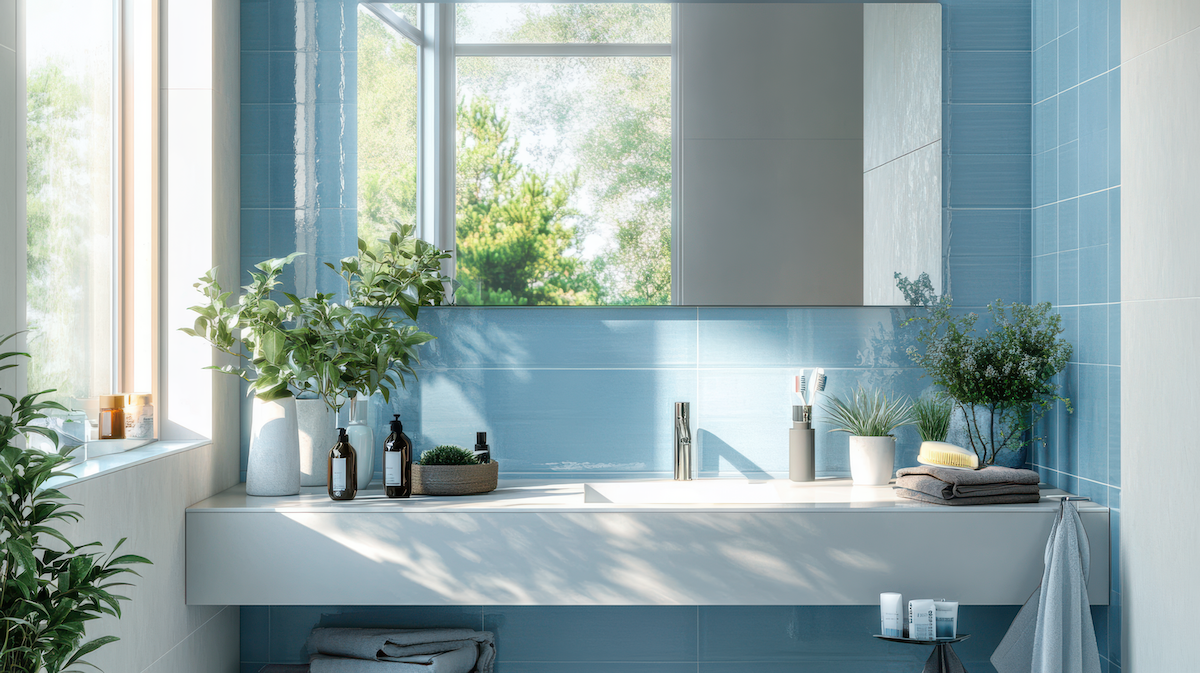
Bathroom Bliss: Selecting Between Porcelain and Ceramic Tiles for Your Dream Home
Choosing the right tiles for your bathroom can feel overwhelming.
You're balancing aesthetics, durability, and cost-all while ensuring the space stays functional and moisture-resistant.
What if you could simplify the decision?
Porcelain and ceramic tiles are two of the most popular options, and they each have unique strengths. This guide dives into the details, helping you pick the best material for your dream bathroom.
Understanding Porcelain and Ceramic Tiles
Porcelain and ceramic tiles share similarities, but their differences make each suited to specific needs.
Porcelain is dense, highly durable, and perfect for areas exposed to water. Ceramic, on the other hand, is lighter, easier to install, and offers a wider range of patterns.
|
Feature |
Porcelain Tiles |
Ceramic Tiles |
|
Material |
Dense, fine-grain clay |
Coarser clay |
|
Water Resistance |
Absorbs ≤ 0.5% water |
Absorbs ≥ 3% water |
|
Durability |
High; withstands heavy traffic |
Moderate; suitable for low-impact areas |
|
Cost |
$3-$10 per sq. ft. |
$1-$5 per sq. ft. |
|
Ease of Installation |
Requires professional tools and expertise |
Easier for DIY installations |
Porcelain tiles perform best in high-traffic, moisture-prone areas. Ceramic tiles work well for decorative applications and areas that don't see constant water exposure.
Learn More: Explore Reeves Custom Homes' top features for modern home design.
Durability and Longevity
Bathroom tiles take a beating. Porcelain tiles are scratch-resistant and chip-proof, making them a better choice for long-term durability. Ceramic tiles are less dense and more likely to chip under heavy use but are perfect for walls or lightly trafficked floors.
|
Durability Factor |
Porcelain Tiles |
Ceramic Tiles |
|
Scratch Resistance |
High |
Moderate |
|
Chip Resistance |
High |
Moderate |
|
Wear Resistance |
Excellent for decades |
Suitable for light use |
If your bathroom sees heavy traffic, go with porcelain. It's built to last.
For lighter use, ceramic tiles get the job done without breaking your budget.
Water Resistance
Bathrooms are wet zones, so water resistance is critical. Porcelain's ≤0.5% absorption rate makes it the best choice for shower floors, steam rooms, and other high-moisture areas.
Ceramic tiles, with an absorption rate exceeding 3%, should be reserved for walls, backsplashes, or areas above the moisture line.
In coastal areas like Hampstead, NC, porcelain tiles are often the go-to for their ability to withstand humidity.
Learn More: Read Reeves Custom Homes' guide on building durable coastal homes.
Best Applications for Bathroom Tiles
Matching the right tile type to its intended application is key to a functional and stylish bathroom.
|
Application |
Best Choice |
Why It Works |
|
Bathroom Flooring |
Porcelain |
Durable, water-resistant, and easy to maintain |
|
Shower Walls |
Porcelain |
Low absorption, mold-resistant |
|
Backsplashes |
Ceramic |
Decorative, lightweight, and cost-effective |
|
Feature Walls |
Ceramic |
Adds vibrant patterns for visual interest |
|
Steam Rooms |
Porcelain |
Handles moisture and high temperatures |
Pairing porcelain floors with ceramic walls creates a balanced, stylish look while keeping costs reasonable.
Learn More: Check out Reeves Custom Homes' gallery of custom bathroom designs.
Cost Breakdown
Budget matters when choosing tiles. While porcelain tiles cost more upfront, their durability and low maintenance often make them a better long-term investment.
|
Expense |
Porcelain Tiles |
Ceramic Tiles |
|
Material Cost |
$3-$10/sq. ft. |
$1-$5/sq. ft. |
|
Installation Cost |
Higher due to density |
Lower; easier to cut |
|
Maintenance |
Minimal |
Moderate |
|
Lifespan |
Up to 50 years |
20-30 years |
Ceramic tiles are more budget-friendly upfront, making them a great option for accent walls or backsplashes. For high-traffic areas, porcelain's longevity outweighs its initial cost.
Trends in Bathroom Tile Design
Bathrooms evolve with trends, but tiles remain timeless.
Here's what's trending now:
- Textured Surfaces: Add depth and slip resistance.
- Large-Format Tiles: Fewer grout lines for a sleek, modern look.
- Earthy Tones: Soft greens and neutral palettes dominate in 2024.
- Mixed Materials: Combine porcelain and ceramic for contrast and balance.
Maintenance Tips
Proper care ensures your tiles stay pristine for years.
|
Maintenance Task |
Porcelain Tiles |
Ceramic Tiles |
|
Cleaning |
Use non-abrasive cleaners |
Mild soap and water suffice |
|
Sealing |
Not required |
Essential for water resistance |
|
Grout Maintenance |
Seal annually to prevent discoloration |
Seal annually for longevity |
Regular upkeep prevents grime buildup and keeps grout lines fresh. Always clean tiles with products designed for their material.
FAQs About Bathroom Tiles
Are porcelain tiles worth the extra cost?
Yes, especially for areas exposed to water and heavy traffic.
What grout color is best for bathroom tiles?
Neutral tones like gray or beige complement most designs and hide dirt.
Can ceramic tiles work in wet areas?
Yes, but they require proper sealing and regular maintenance.

Final Thoughts
Your bathroom deserves tiles that are as functional as they are beautiful. Porcelain tiles deliver unmatched durability and water resistance, while ceramic tiles shine in decorative roles.
By balancing your needs with your budget, you'll create a space that stands the test of time.
For expert advice and inspiration, explore Reeves Custom Homes.
